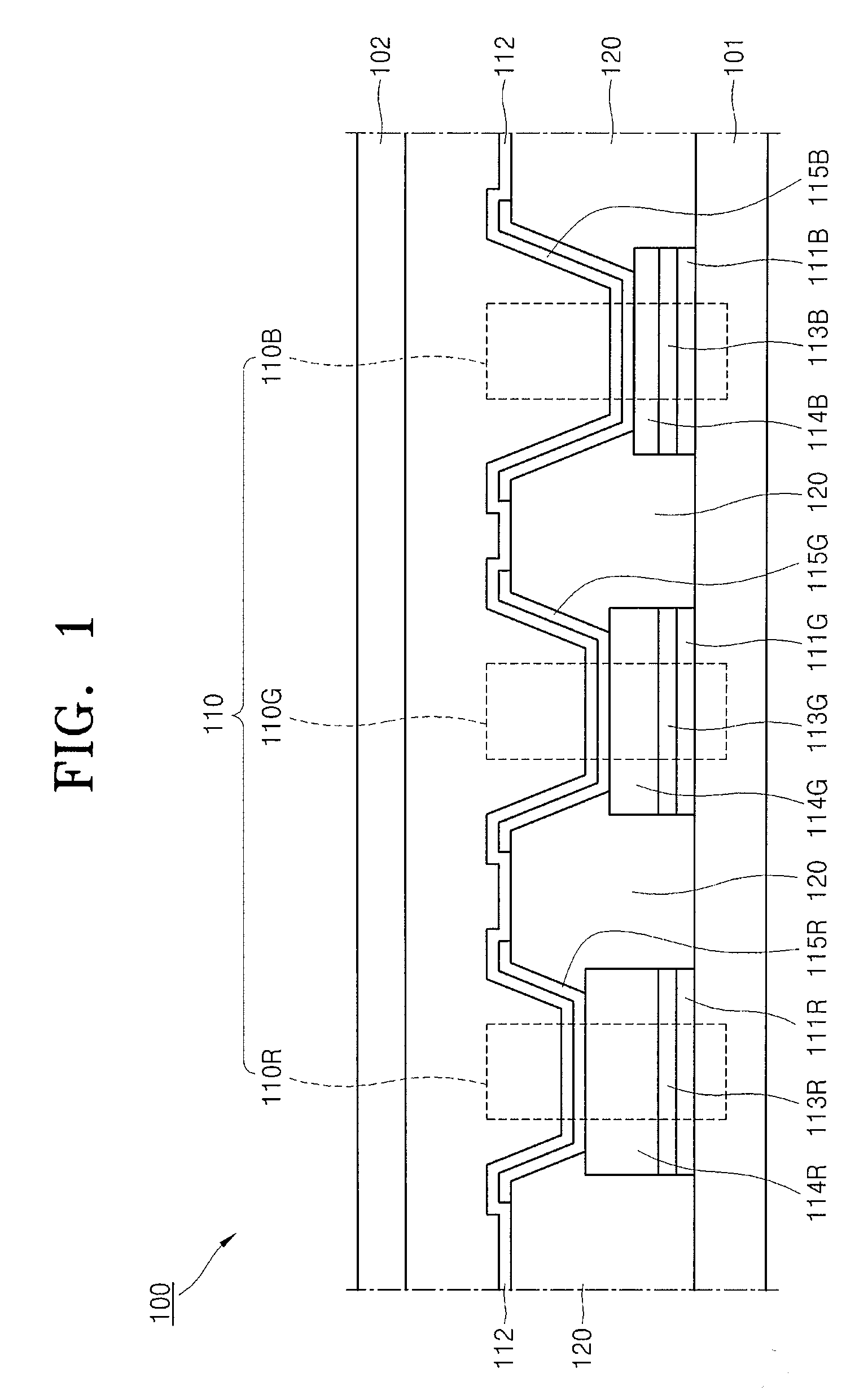Organic light emitting display device
a technology of light-emitting display and organic material, which is applied in the direction of discharge tube luminescnet screen, discharge tube/lamp details, final product manufacturing, etc., can solve the problems of reducing the yield of oled devices manufactured using such a process and devoted a lot of effort to achieve maximum efficiency, and achieves the effect of improving productivity
- Summary
- Abstract
- Description
- Claims
- Application Information
AI Technical Summary
Benefits of technology
Problems solved by technology
Method used
Image
Examples
Embodiment Construction
[0023]In the following detailed description, only certain exemplary embodiments of the present invention are shown and described, by way of illustration. As those skilled in the art would recognize, the invention may be embodied in many different forms and should not be construed as being limited to the embodiments set forth herein. Also, in the context of the present application, when an element is referred to as being “on” another element, it can be directly on the another element or be indirectly on the another element with one or more intervening elements interposed therebetween. Like reference numerals designate like elements throughout the specification.
[0024]FIG. 1 is a schematic cross-sectional view of a top emission organic light emitting display (OLED) device 100 according to an embodiment of the present invention. FIG. 2 is a schematic cross-sectional view illustrating an organic light emission unit 110, including first, second, and third pixel units 110R, 110G, and 110B,...
PUM
 Login to View More
Login to View More Abstract
Description
Claims
Application Information
 Login to View More
Login to View More - R&D
- Intellectual Property
- Life Sciences
- Materials
- Tech Scout
- Unparalleled Data Quality
- Higher Quality Content
- 60% Fewer Hallucinations
Browse by: Latest US Patents, China's latest patents, Technical Efficacy Thesaurus, Application Domain, Technology Topic, Popular Technical Reports.
© 2025 PatSnap. All rights reserved.Legal|Privacy policy|Modern Slavery Act Transparency Statement|Sitemap|About US| Contact US: help@patsnap.com



